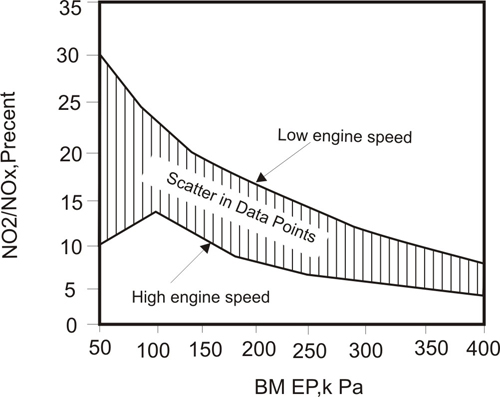NO2 Formation
Nitrogen dioxide emissions from the spark-ignition engines are negligibly small and constitute less than 2% of the total NOx emissions. NO emissions range from a few hundred ppm to several thousands of ppm while, the maximum NO2 emissions are around 60 to 70 ppm only compared to 3000- 4000 ppm of NO at full load conditions. In diesel engines however, the NO2 emissions account generally for 10 to 30 percent of the total NOx emissions. In diesel engines, NO2 concentration may be in the range of 200 to 400 ppm compared to NO concentrations typically in the range of 1500 to 3000 rpm. NO2 is rapidly formed in the combustion zone by reaction of NO with HOO- radical.
Later in the post combustion gases NO2 on reaction with atomic O- is converted back to NO and O2.
However, if the high temperature burned gases due to presence of high turbulence mix rapidly with colder air or air-fuel mixture, the reactions that decompose NO2 back to NO and oxygen are frozen and relatively higher concentrations of NO2 result. The relative concentration of NO2 with engine power typically observed in diesel engines is shown in Fig.2.10. An increase in relative concentration of NO2 with decrease in engine load as seen in Fig 2.10 supports this mechanism. As the engine load decreases the air to fuel ratio increases and the probability of high temperature gases coming suddenly in contact of cooler air/ charge in the engine cylinder also increases. Hence, there is a higher probability of freezing of NO2 decomposition reactions in diesel engines at lighter loads.

| Figure 2.10 |
Exhaust NO2 concentration as percent of total NOx for a DI diesel engine |
|